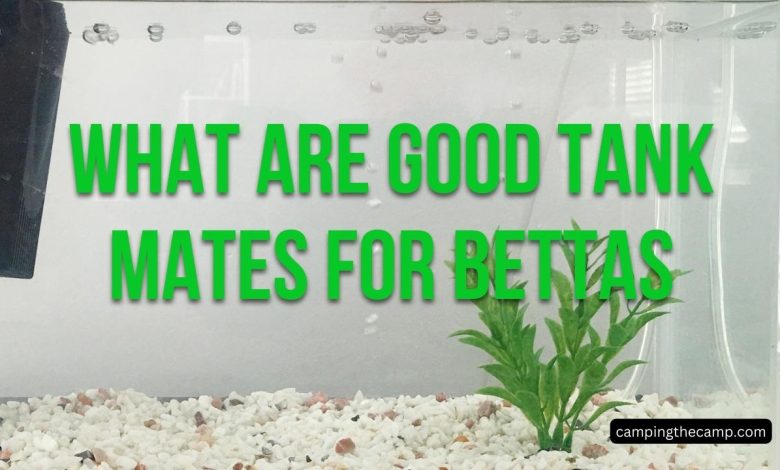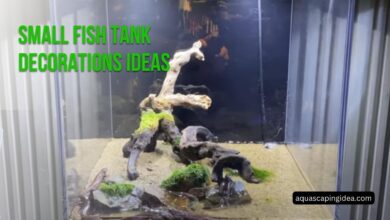
Good tank mates for bettas should be small, peaceful fish that won’t nip at the betta’s long, flowing fins. Some suitable options include guppies, corydoras catfish, tetras, and snails. However, it’s important to provide ample hiding spots and plant cover, as bettas can become territorial and aggressive, especially towards other brightly colored fish. Additionally, ensure the tank is large enough to accommodate the betta’s activity level and the number of tank mates. Proper water parameters, filtration, and regular maintenance are crucial for a healthy and harmonious community tank with bettas.
Carefully Selecting Suitable Betta Tankmates
The vibrant pigments, flowing fins and bold attitudes capturing attention in betta fish also cultivated their unwarranted notoriety for unrelenting aggression against tankmates in home aquariums. However, given adequate space and compatible species selections, many betta males and females successfully integrate tankmates peacefully. Here are top species appropriately sharing community habitats alongside bettas.
Betta Temperament Considerations
Despite overblown reputations for intense aggression, responsibly bred betta splendens raised in enriching environments often tolerate other fish quite well. However, their territorial ancestry still manifests through occasional demonstrations towards subordinates when defending limited resources.
The inclination males exhibit towards intra-species aggression additionally influenced recommendations for solitary housing at times. However, both sexes succeeded long-term among suitable small shoaling tankmates unlikely challenging dominance given careful species and number choices to prevent escalating stress.
Top Tankmate Species for Bettas
Tetras
Selective breeding generated today’s prodigiously popular tetra species displaying most temperament traits ideal for bettas. Peaceful mid-level schooling tetras like neon, ember, black neon and cardinal varieties mix well by avoiding invading topmost or bottom territories while their small sizes and bright colors elicit minimal betta provocation. Their activity also intrigues bettas, and schools distract aggressive chasing.
Rasboras
Similar to tetras, vibrant nano fish like harlequin, lambchop and glowlight rasboras inhabit upper water columns in closely bonded groups – generating movement and color bettas respond to positively. Reduced fin nipping tendencies andminute dimensions make these active yet non-confrontational species fine tankmates when kept in schools six plus.
Corydoras Catfish
The premier bottom dwelling tankmates compatible with bettas are Corydoras catfish like classic bronze, albino, panda and pygmy species. Armored bodies withstand rare nippy assaults. Most importantly, catfish inhabit lower tank quadrants and concentrate primarily on left over Table Food near substrates rather than the top sections bettas claim. Avoid similar bottom dwellers as aggressive as bettas like Pleco fish.
Guppies
Hardy live bearers such as guppies, mollies, platies and swordtails historically swam alongside fighting fish abroad water gardens safely, especially given protective scales. However, their long flashy fins also risk attracting excessive betta flaring and possible attacks more than compact tetras when groups measure fewer than five. Keep watching initially for potential fin nipping issues.
Snails and Shrimp
For solo bettas requiring tankmates, hard shelled ramshorn, mystery and nerite aquatic snails, along with Amano, cherry or ghost shrimp make suitable pairings in planted tanks with hides preventing aggressive attacks during molting as bettas may perceive weakened crustaceans as easy targets for rare predatory instincts counter to pellet diets.
Ultimately selecting tankmates suiting betta temperaments and environmental preferences through engaging schools minimizes confrontational scenarios balancing their checkered reputations, allowing aquarists greater freedom safely augmenting betta community displays. Consider pairing options carefully however when finding your fish fine feathered friends!
Ideal Tank Conditions for Community Housing
Realistically housing bettas alongside other species long term relies on providing sufficiently spacious environments with hiding places permitting retreating from potential conflicts and breaks in line of sight contact. Standard horizontal 10-20 gallon aquariums minimum help disperse competitive impulse minimizing likelihood for outright attack from territorial disputes that may harm inhabitants or stress immune systems should aggression peak attempting cohabitation in smaller tanks.
Ensure selecting any additional candidates exhibit peaceful tendencies while supplying a ratio of at least 3 individuals per supplementary species to both diffuse aggression through distributing chase focus and allow forming proper shoaling behaviors minimizing infighting themselves. Introducing betta fish last into established mid-level schooling tankmate groups grants existing residents some territorial foothold before the bold new arrival.
Ideal Species Combinations with Betta
Here’s a table with ideal species combinations with betta:
| Species | Example Breeds | Stocking Amount |
|---|---|---|
| Tetras/Rasboras | Ember Tetras, Harlequin Rasboras | 6-8 |
| Corydoras Catfish | Bronze Corydoras, Panda Corydoras | 5-6 |
| Livebearers | Endler Guppies, Platies | 3-4 |
| Invertebrates | Red Cherry Shrimp, Nerite Snails | 6+ |
Suitable Tank Mates For Betta Fish
Compatible Tank Mates
- Small Community Fish: Peaceful species like guppies, tetras, rasboras, and corydoras catfish can make good tank mates for bettas if the tank is large enough and well-planted.
- Bottom Feeders: Certain bottom-dwelling scavengers like otocinclus catfish and kuhli loaches can coexist with bettas as they occupy different areas of the tank.
- Shrimp and Snails: Many betta keepers have success with adding shrimp like cherry shrimp or Amano shrimp, as well as snails like nerite snails, to their betta tanks.
Incompatible Tank Mates
- Aggressive Fish: Territorial, aggressive, or nippy fish like gouramis, cichlids, barbs, and serpae tetras are not recommended tank mates for the aggressive betta.
- Nippy Fish: Any fish that is known to nip fins, like some tetras or barbs, can pose a risk to the beautiful fins of the betta.
- Large Tank Mates: Bettas may be viewed as food by much larger tankmates like gourami, large cichlids, or other predatory fish.
Factors to Consider
- Tank Size: Betta fish require at least a 5 gallon tank, but larger is better if adding tank mates. More space allows territories.
- Number of Tank Mates: Don’t overstock the tank. A good rule is 1 inch of fish per 1 gallon of water. Too many tank mates can stress the betta.
- Personality of Your Betta: Some bettas are more aggressive than others. Get to know your betta’s temperament before adding tank mates.
- Tank Setup and Decor: Plenty of plants, caves, and break lines are important to allow territories and line-of-sight breaks.
Tips for Successful Compatibility
- Introducing New Tank Mates: Quarantine new fish and acclimate them slowly. Rearrange decor to void territorial aggression.
- Providing Plenty of Hiding Spots: Live plants, caves, and decor give fish spaces to get away from each other.
- Monitoring Behavior: Watch closely for signs of aggression, stress, or fin nipping after adding new tank mates.
- Having a Back-up Plan: Be prepared to separate aggressive fish by having another tank or container ready.
Species Recommendations
Best Community Fish
- Guppies, platies, swordtails – Peaceful, hardy, and colorful
- Tetras (neon, cardinal, ember) – Active schooling fish that don’t bother bettas
- Rasboras (harlequin, lambchop) – Peaceful top-dwellers that add movement
- Corydoras catfish – Bottom-dwellers that help clean up debris
Best Bottom Feeders
- Otocinclus catfish – Excellent algae eaters that don’t bother bettas
- Kuhli loaches – Peaceful scavengers that stay out of the betta’s way
- Rubber lip/bulldog pleco – Undemanding wood-eating species
- Nerite snails – Cannot reproduce in freshwater, but eat algae
Best Shrimp and Snails
- Cherry shrimp – Brightly colored and peaceful
- Amano shrimp – Hardy algae eating shrimp
- Ghost shrimp – Inexpensive scavengers
- Mystery snails – Large but peaceful bottom dwellers
- Nerite snails – Small, attractive snails that won’t overpopulate
Frequently Asked Questions
Do bettas eat tankmates like shrimp or snails?
Well fed bettas rarely bother larger tankmates. However, vulnerable molting shrimp or small snails may become targets for aggression or predatory curiosity in some cases. Provide abundant hiding spots.
Which commonly kept tank fish should not house bettas?
Avoid similarly aggressive or fin nipping species like tiger barbs along with faster fish easily netting flowing betta fins including goldfish. Also refrain from pairing two male bettas.
What tank size works best for betta communities?
Most experts recommend 10-20 gallon lightly stocked community tanks for pairing bettas with 4-6 additional small shoaling fish. Divide interior sightlines providing territory.
Should tankmates be added before or after bettas?
Introduce any supplemental fish first allowing them to claim areas before adding bettas last to prevent excessive territorial battles from immediate intrusion into perceived established territory.
Are female bettas better community candidates than males?
Sometimes true, but well conditioned males from tolerant bloodlines residing in larger groups 10+ exhibiting naturalistic behaviors also integrate into communities successfully in many cases.
Conclusion
By acknowledging aggressive tendencies resulting from betta ancestry but understanding triggers fishkeepers mitigate through correct species selections and environment provisions, aquarists discover confidently sustaining captivating communities unifying these legendary fish alongside suitable small schooling companions beyond solitary confinement limits their brilliant attributes. With planned partitioning and patience bonding tankmates, even combative cichlids peacefully coexist given harmony through deliberation and care.




